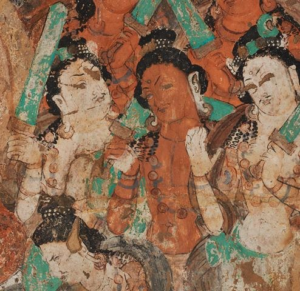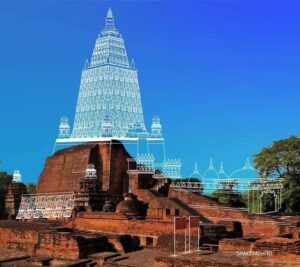Few figures in medieval Indian history evoke as much controversy as Mahmud of Ghazni (971–1030 CE). To some Persian chroniclers, he was the “Sword of Islam,” a champion who spread faith and empire. To many Indian traditions, he is remembered as a plunderer, whose seventeen invasions between 1000 and 1027 CE scarred the subcontinent with destruction. His campaigns were both political and economic, but their cultural impact was immense reshaping the memory of India’s medieval age.
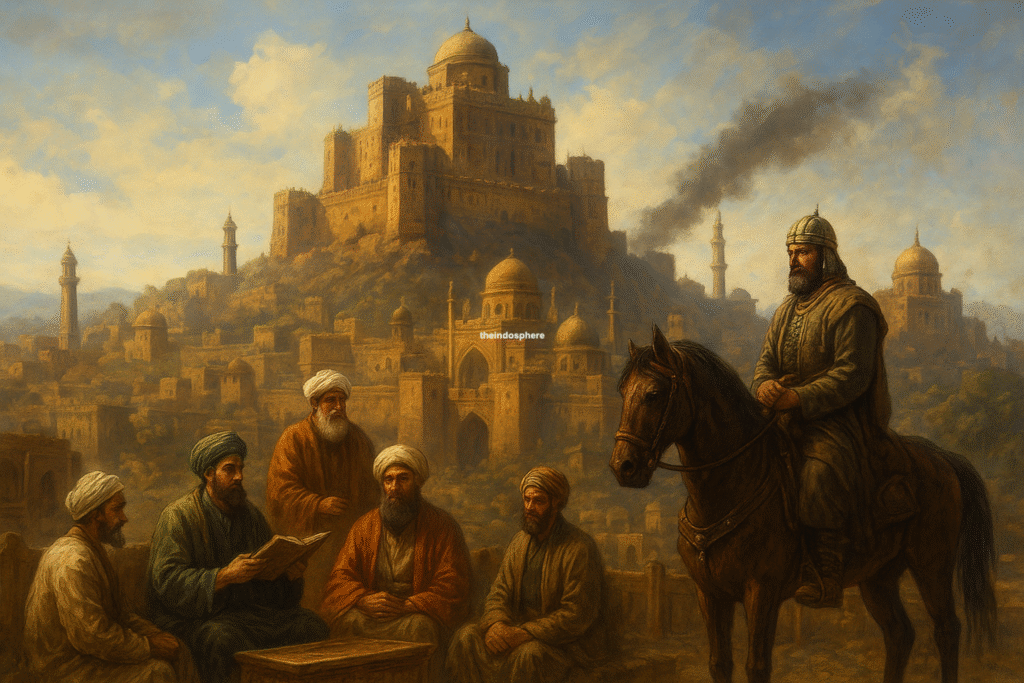
Early Life and Rise
Mahmud was the son of Sabuktigin, founder of the Ghaznavid dynasty, a Turkic slave who rose to power in Ghazni (modern-day Afghanistan). Born in 971, Mahmud proved a formidable warrior and strategist. By 998, he became ruler of the Ghaznavid state, inheriting a frontier kingdom squeezed between the Persian-Islamic world and the riches of India.
His ambitions were twofold: to expand his dominion across Central Asia and to exploit the wealth of the Indian plains, particularly its temples, which held not only religious but immense economic value.
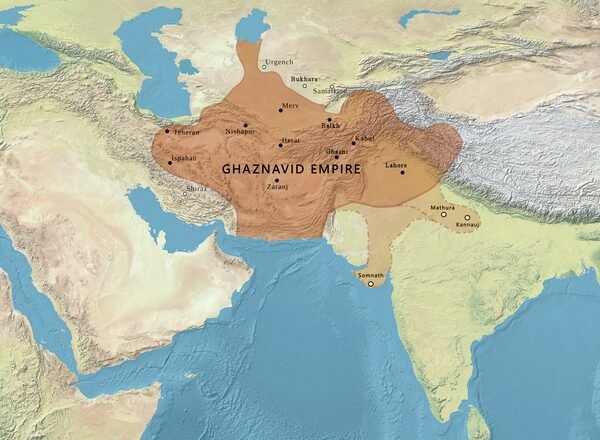
Seventeen Campaigns into India
Between 1000 and 1027 CE, Mahmud launched seventeen raids into northwestern and northern India. His targets were the kingdoms of the Punjab, Rajasthan, Gujarat, and the Gangetic plain.
- 1001 CE: Defeated Jayapala of the Hindu Shahi dynasty near Peshawar.
- 1008 CE: Won the famous battle against Anandapala, consolidating Ghaznavid control of Punjab.
- 1014–1018 CE: Raided the Gangetic Doab, attacking Kannauj and Mathura, looting temples and treasuries.
- 1025 CE: His most infamous expedition, the sack of Somnath temple in Gujarat, where he carried away immense wealth and shattered the sacred idol, an act chronicled by later Persian historians as a triumph of faith.
These campaigns were swift, brutal, and highly lucrative. They did not aim at permanent annexation deep into India but at economic extraction. Mahmud’s armies plundered gold, jewels, and idols, financing the flowering of Ghazni into one of the wealthiest capitals of its age.
Major Invasions and Wars
1. Battle of Peshawar (1001 CE)
- Opponent: Jayapala of the Hindu Shahi Dynasty
- Outcome: Mahmud decisively defeated Jayapala, who later immolated himself out of shame. The Hindu Shahi kingdom was severely weakened, marking the first significant step toward Mahmud’s dominance over the northwestern regions of the Indian subcontinent. The battle also marked the beginning of a systematic conquest that would leave lasting scars on Indian civilization.
2. Battle of Waihind (1008 CE)
- Opponent: Anandapala, son of Jayapala
- Outcome: Despite uniting various Rajput clans, Anandapala suffered a crushing defeat. The Hindu Shahi kingdom was permanently destroyed, opening Punjab to future invasions. The loss at Waihind severely weakened Hindu resistance in the region, making it easier for Mahmud to expand his plundering expeditions further into the Indian heartland.
3. Conquest of Multan (1006 & 1010 CE)
- Opponent: Ismaili rulers of Multan
- Outcome: Mahmud overthrew the local ruler and established firm control over the region, suppressing Ismaili influence. This victory provided a strategic advantage for Mahmud, allowing him to establish a military base in the northwestern frontier of India.
4. Attack on Thanesar (1014 CE)
- Target: The holy Hindu city of Thanesar
- Outcome: Mahmud looted its temples, particularly the Chakraswamin Temple, and carried the wealth back to Ghazni. The devastation of Thanesar demonstrated his unrelenting quest for wealth and religious destruction.
5. Sack of Mathura (1018 CE)
- Target: Mathura, a major Hindu religious and cultural center
- Outcome: The grand temples of Mathura, including those dedicated to Bhagwan Krishna, were razed. Mahmud looted immense wealth and massacred the defenders. The destruction of Mathura was not only an economic blow but also a cultural catastrophe, as it was one of the most revered centers of Hinduism.
6. Destruction of Kannauj (1019 CE)
- Opponent: Rajyapala of the Pratihara Dynasty
- Outcome: Rajyapala surrendered without resistance, but he was later killed by other Rajput rulers for his cowardice. Mahmud sacked Kannauj, once a flourishing cultural hub. The fall of Kannauj marked the end of an era for North India’s ruling elite, as the city had been a major center of power and learning.
7. Gujarat and the Destruction of Somnath (1025 CE)
- Target: The famous Somnath Temple
- Outcome: One of Mahmud’s most infamous acts, he destroyed the revered Somnath temple, massacred 50,000 defenders, and looted immense treasures. The temple was known for its immense wealth and spiritual significance, and its destruction sent shockwaves across India. The idol of Somnath was shattered, and its pieces were carried back to Ghazni to be used as steps for a mosque, symbolizing Mahmud’s intent to impose Islamic supremacy.
Kingdoms That Fell Due to Mahmud’s Invasions
Mahmud’s relentless invasions led to the downfall of several major Hindu and Buddhist dynasties:
- Hindu Shahi Dynasty (Punjab & Afghanistan) – Destroyed by 1021 CE, permanently ending Hindu rule in the region.
- Pratihara Empire (Kannauj & Northern India) – Severely weakened, leading to its eventual downfall.
- Chandela Rajputs (Bundelkhand & Central India) – Lost power after their defeat at Mahmud’s hands.
- Paramaras of Malwa (Western India) – Weakened due to repeated attacks, making them vulnerable to later conquests.
- Solanki Dynasty (Gujarat) – Suffered major losses due to the Somnath invasion, causing instability in the region.
Ghazni: From Plunder to Patronage
The spoils of India transformed Ghazni. Mahmud adorned his capital with palaces, gardens, and mosques, aspiring to rival Baghdad as an Islamic center of culture. He patronized scholars like al-Bīrūnī, who accompanied his campaigns and later wrote the Kitāb al-Hind, a meticulous study of Indian society, religion, and science.
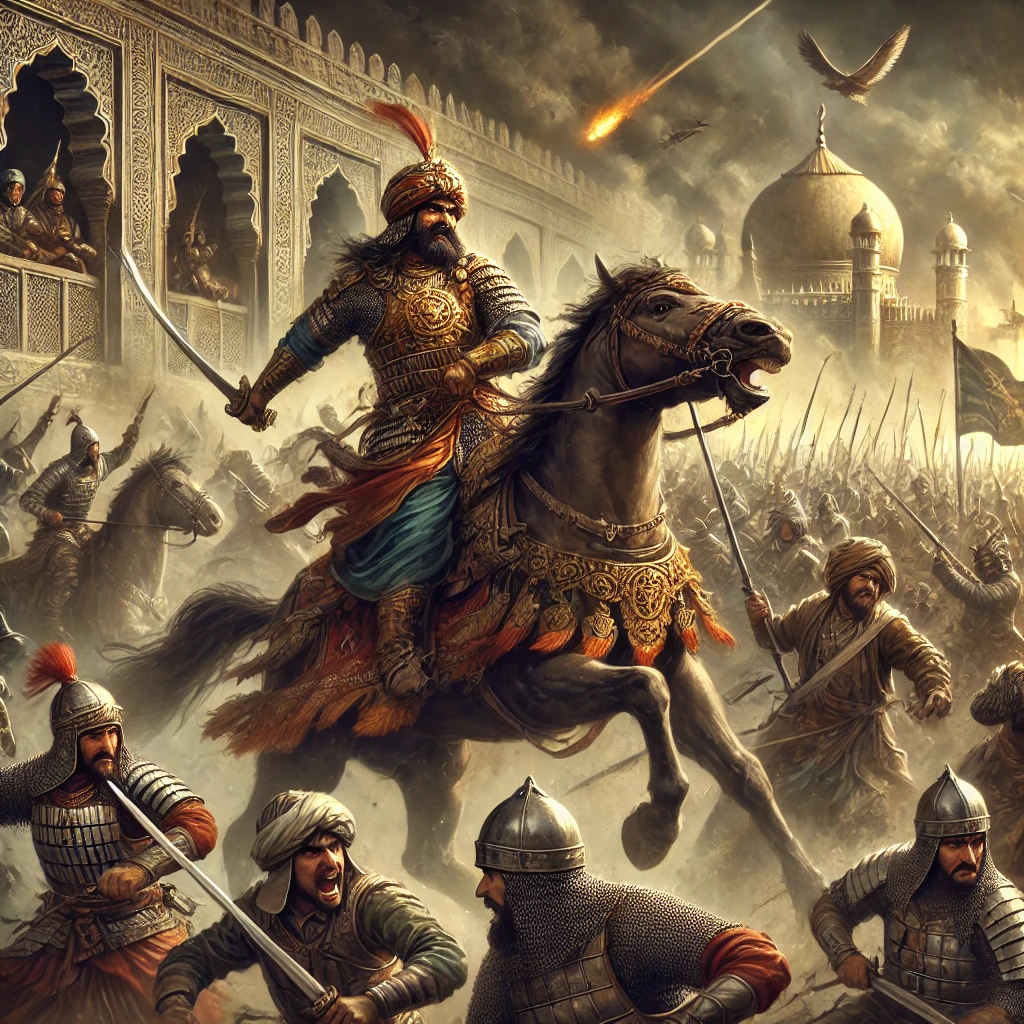
Thus, paradoxically, Mahmud’s destruction of temples went hand in hand with the preservation of Indian knowledge through translation into Arabic and Persian.
Temples and Religious Centers Destroyed
Mahmud deliberately targeted religious institutions as part of his campaign to impose Islamic supremacy. Some of the most prominent temples he destroyed include:
- Somnath Temple (Gujarat) – Razed in 1025 CE, its wealth taken to Ghazni.
- Mathura Temples (Uttar Pradesh) – Destroyed in 1018 CE, along with the sacred deities.
- Thanesar Temples (Haryana) – Razed in 1014 CE.
- Kannauj Temples (Uttar Pradesh) – Plundered in 1019 CE.
- Jwalamukhi Temple (Himachal Pradesh) – Attacked in 1009 CE, its priests massacred.
- Nagarkot Temple (Himachal Pradesh) – Destroyed in 1015 CE.
The Brutality of Mahmud’s Invasions
Mahmud’s conquests were marked by extreme violence. His campaigns resulted in:
- Mass Slaughters: Entire populations of cities were often killed. At Somnath, approximately 50,000 defenders were massacred.
- Forced Conversions & Slavery: Tens of thousands of captives, including women and children, were sent to Ghazni as slaves.
- Cultural Destruction: Temples and libraries, which were centers of learning, were demolished, leading to an intellectual decline in the region.
Impact on Hindu and Buddhist Culture
Mahmud’s invasions had long-term effects:
- Decline of Buddhism in North India: Major monastic institutions were wiped out, forcing monks to flee to Tibet, Nepal, and Southeast Asia.
- Weakening of Hindu Kingdoms: Indian rulers lost economic and military strength, making them vulnerable to later invasions by Muhammad Ghori and the Delhi Sultanate.
- Loss of Knowledge: The destruction of temples and libraries led to the loss of centuries-old scriptures and scientific advancements.
Historical Debates
Historians today debate Mahmud’s motivations. Was he primarily a religious zealot, smashing temples for Islam, or a pragmatic ruler, looting temples as treasuries of gold rather than centers of faith? Evidence suggests both elements: his campaigns often had religious overtones, but his deeper goal was to finance empire-building.
However, the scale and frequency of Mahmud’s campaigns, combined with his Persian chroniclers’ framing of them as holy war, gave them a singularly destructive reputation.
A Legacy of Fear and Memory
For Indians, Mahmud’s legacy has been remembered above all for his temple raids. Chroniclers like Firishta (16th century) detail his sack of Somnath with relish, describing how he carried its gates to Ghazni. For centuries, this act symbolized the humiliation of Hindu kingdoms at the hands of foreign invaders.
Later rulers, from the Delhi Sultans to the Mughals, were often compared with Mahmud, some imitating his zeal, others consciously rejecting it to craft more tolerant images. In modern India, Mahmud’s name remains a byword for destruction, his invasions remembered in school textbooks, nationalist histories, and even political discourse.
Mahmud of Ghazni’s legacy is one of paradox: he destroyed and preserved, plundered and patronized, left India politically fractured but intellectually documented through the eyes of al-Bīrūnī. In Indian memory, however, he is remembered less as a patron of science and more as the invader who turned temples into ruins and wealth into trophies.
His raids marked a turning point: they exposed the vulnerability of Indian polities, foreshadowed centuries of foreign incursions, and etched into cultural consciousness the image of the foreigner at the gate. Mahmud’s shadow has endured for a thousand years, as both a symbol of devastation and a reminder of India’s resilience.

